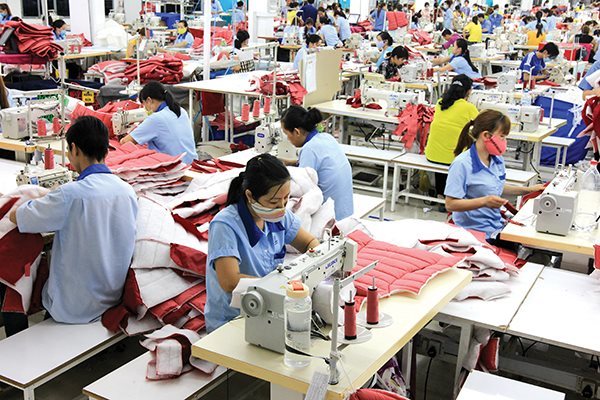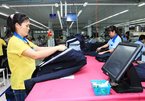Analysts said EVFTA would not only help Vietnam increase the number of jobs, but also improve the quality of the human resources.

Nguyen Hai Minh, deputy chair of EuroCham, said the strict provisions on rules of origin in EVFTA will lead to changes in the global value chains. Many enterprises in the supply chains of textiles and garments, footwear and electronics would relocate their production to Vietnam in order to enjoy tariff preferences when exporting products to the EU.
Moreover, the trade agreement, together with the Investment Protection Agreement (PIA) would help European enterprises, especially small and medium ones, feel more confident when making investments in Vietnam.
| Analysts said EVFTA would not only help Vietnam increase the number of jobs, but also improve the quality of the human resources. |
The textile and garment industry, one of the biggest beneficiaries from EVFTA, is an example. EVFTA sets very strict rules of origin and in order to enjoy preferential tariffs, enterprises will have to move their supply chains to Vietnam.
As such, the textile and garment industry needs to develop more comprehensively. The sustainable competitiveness of the industry not only depends on a cheap labor force, but also on modern production lines which need to be more modern and flexible. In other words, Vietnam needs to strive for an industry with a higher level of locally made content.
“The labor demand increases and the quality of human resources will have to change under the new conditions,” Minh said.
Pham Hong Quan, HR director in charge of Asia Pacific of Piaggio Vietnam, a member of EuroCham, commented that though HR quality has improved, there are still many problems that need to be fixed.
“Human resources have a short term vision, the leaders’ skills are not good. The majority of workers were born in the baby boomer period, therefore, the information technology application skills and the technology access capability remains limited,” Quan said.
EuroCham believes that there is a big difference between the requirements set by European companies for Vietnamese workers and the workers’ actual capability. The lack of candidates meeting the requirements is one of the disadvantages of the Vietnamese labor market.
In fact, the thirst for workers not only exists in European companies, but throughout the country. A survey by the Vietnam Chamber of Commerce and Industry (VCCI) found that 55 percent of polled enterprises complained they found it difficult to recruit high-quality workers. Another survey found that 85 percent of enterprises find it difficult to recruit high ranking senior workers.
In order to have enough high-quality workers to satisfy the requirements of production, enterprises have to train workers themselves or join forces with universities to produce the workers who meet requirements.
Linh Ha

Tackling labor shortage
The EU-Vietnam Free Trade Agreement (EVFTA) is poised to help Vietnam both create more job opportunities and improve the quality of her labor force. However, the road ahead is really tough.

Nearly 12,000 Vietnamese laborers work in foreign fishing vessels
Nearly 12,000 Vietnamese guest workers have been serving in foreign fishing vessels, according to the Overseas Labor Management Department.
 The need for laborers is expected to become more serious when the EU-Vietnam FTA (EVFTA) takes effect.
The need for laborers is expected to become more serious when the EU-Vietnam FTA (EVFTA) takes effect.